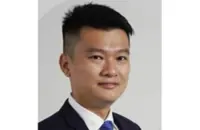Successful outing: Choong (in white) and his team members posing with their awards.
STUDYING deoxyribonucleic acid (DNA) structures is an essential component of being a biology student.
However, the lack of visual literacy among students in this field has led to misconceptions in their learning.





